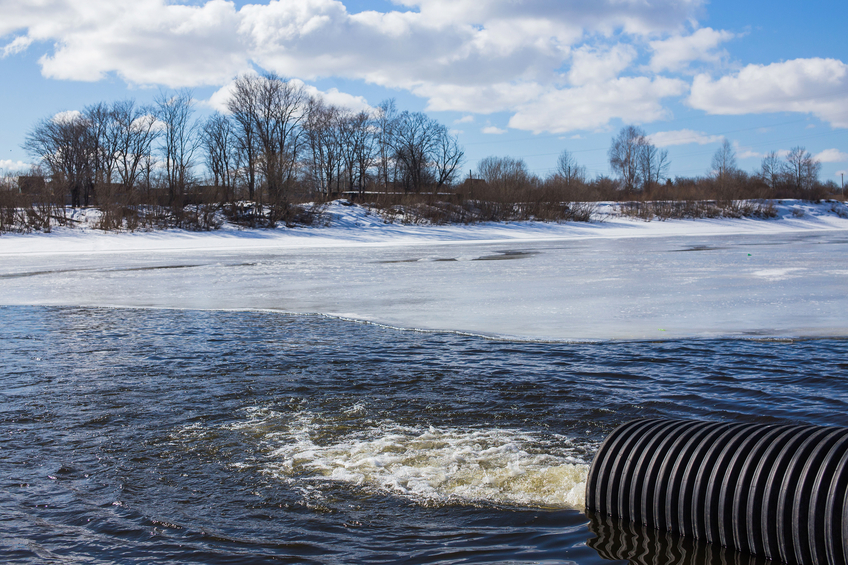Nebraska Civil and Ethics 7 PDH Discount Package 2
Courses in this Package
Illicit Discharge Detection and Elimination (C05-002)
Rational Method Hydrologic Calculations with Excel 2 (C01-010)
Ethical Issue: Deciding if Something is a Gift or a Bribe (LE1-007)

This online engineering PDH course presents EPA's BMP for identifying and eliminating non-stormwater discharges to storm sewers to improve runoff stormwater quality.
Non-storm water discharges are typically the result of unauthorized connections of sanitary or process wastewater drains to storm sewers. These connections are common, yet often go undetected. Non-storm water discharges can include discharges of process water, air conditioner condensate, non-contact cooling water, vehicle wash water, or sanitary waste.
EPA recognizes that these discharges are significant sources of pollutants, and unless regulated by an NPDES permit, they are also illegal. Therefore the EPA published the Storm Water Phase II Rule on
This 5 PDH online course is applicable to municipality owners and/or operators, construction contractors/workers, site developers, engineers, managers, and all other personnel involved in the detection and elimination of illicit discharges.
This PE continuing education course is intended to provide you with the following specific knowledge and skills:
- Types and methods of illicit discharges
- Applicability
- Siting and design criteria
- Maintenance and cost considerations
- Failing Septic Systems
- Industrial/Business Connections
- Recreational Sewage
- Sanitary Sewer Overflows
- Identifying Illicit Connections
- Wastewater Connections to the Storm Drain System
- Illegal Dumping
Once you complete your course review, you need to take a multiple-choice quiz consisting of twenty five (25) question ns to earn 5 PDH credits. The quiz will be based on this EPA publication.
Upon successful completion of the quiz, print your Certificate of Completion instantly. (Note: if you are paying by check or money order, you will be able to print it after we receive your payment.) For your convenience, we will also email it to you. Please note that you can log in to your account at any time to access and print your Certificate of Completion.

This online engineering PDH course will enable you to calculate peak storm water runoff rate using the Rational Method equation in either U.S. or S.I. units, including determination of runoff coefficient, calculation of time of concentration, and determination of design rainfall intensity. It will also prepare you for the use of Excel spreadsheets to efficiently make the calculations.
Calculation of peak storm water runoff rate from a drainage area is often done with the Rational Method equation (Q = CiA). Use of Excel spreadsheets for calculations with this equation and for determination of the design rainfall intensity and the time of concentration of the drainage area, are included in this course. The parameters in the equations are defined with typical units for both U.S. and S.I. units.
This 1 PDH online course is applicable primarily to civil engineers, hydraulic engineers, highway engineers, and environmental engineers, design professionals, technical and construction personnel who are interested in gaining a better understanding of the rational method hydrologic calculations using Excel.
This PE continuing education course is intended to provide you with the following specific knowledge and skills:
- Knowing the parameters and their U.S. and S.I. units to be used in the Rational Method equation
- Ability to calculate peak storm water runoff rate with the Rational Method equation, using either U.S. or S.I. units
- Ability to place a given soil into one of the four SCS soil groups based on its measured minimum infiltration rate
- Ability to place a given soil into one of the four SCS soil groups based on its description
- Ability to determine a value of the Rational Method runoff coefficient based on land use, soil group, and slope of the watershed
- Ability to calculate the overland sheet flow travel time for a watershed using the Manning Kinematic equation
- Ability to calculate the shallow concentrated flow travel time for a watershed using the NRCS method
- Ability to calculate the open channel flow travel time for a watershed using the Manning equation
- Knowing the form of the equation used for rainfall intensity as a function of storm duration for a specified return period
- Familiarity with methods for using Excel spreadsheets to make the different types of calculations
In this professional engineering CEU course, you need to review the course document tilted, "Rational Method Hydrologic Calculations with Excel".
Upon successful completion of the quiz, print your Certificate of Completion instantly. (Note: if you are paying by check or money order, you will be able to print it after we receive your payment.) For your convenience, we will also email it to you. Please note that you can log in to your account at any time to access and print your Certificate of Completion.

This online engineering PDH course will establish, through the presentation of many examples, the principles of distinguishing between a gift and a bribe.
The federal government has formulated detailed rules covering gifts given to executive-branch employees in many situations. The rules are published in the Code of Federal Regulations (CFR) and are illustrated through many examples. Even though the examples are intended for government employees (many of whom are engineers), they also apply to private-sector engineers in similar situations. This course presents selected CFR examples that furnish guidance on the ethics of gift giving in situations that are especially relevant to engineers.
This 1 PDH online course is intended for engineers seeking guidance on distinguishing between ethical gift-giving and bribery.
This PE continuing education course is intended to provide you with the following specific knowledge and skills:
- Familiarizing with definitions of a bribe and a gift
- Knowing the bribe status of a gift based on a personal relationship
- Understanding the conditions under which gifts to spouses are acceptable
- Knowing the need to avoid even the appearance of a gift being a bribe
- Recognizing when gifts involving free attendance at meetings and conferences are acceptable
- Understanding the importance of the cumulative effect of receiving even small gifts on a periodic basis
- Learning the importance of gifts received when on assignment rather than outside of work
Upon successful completion of the quiz, print your Certificate of Completion instantly. (Note: if you are paying by check or money order, you will be able to print it after we receive your payment.) For your convenience, we will also email it to you. Please note that you can log in to your account at any time to access and print your Certificate of Completion.